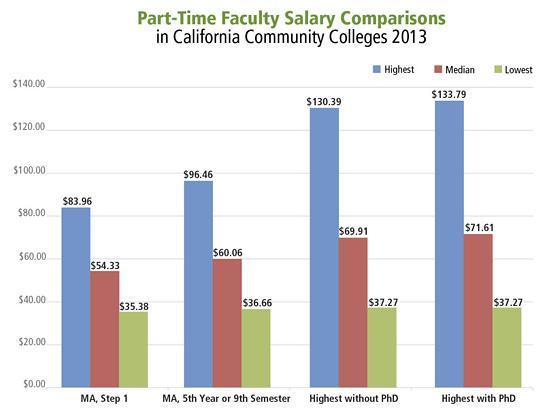Peralta reaches 100 percent pay parity; locals win distance education support
From course conversion stipends to health benefits extensions
In spite of the pandemic, a number of local unions won big gains for adjuncts, from parity pay to distance education, to the preservation of healthcare for adjuncts with reduced loads. These wins are especially significant at this time in which revenues are falling and concerns over future budgets made many administrators skittish to bargain.
AFT resolution supports $7,000 per three-credit course for adjuncts
One of the more talked about resolutions passed by the biennial AFT Convention this July was Resolution 15, which calls for AFT to support City University of New York adjuncts in their quest to achieve through “actions, demonstrations, and advocacy,” a minimum of $7,000 per three-credit class.
The resolution, which passed with resounding support and no opposition, also supports this minimum in “all other AFT locals’ campaigns for fair adjunct pay.”
CFT’s efforts yield parental leave, more full-time positions, paid office hours, pay equity
If there were perhaps one way to describe the legislative campaign waged by CFT this year as it regards both part-timers and the community college system, one could say it was “spirited.” Despite the sea changes proposed for the entire system, the union still won improvements for part-timers.
Two union women and the fight for pay equity
How the “comparable worth” campaign succeeded
On a hillside in San Francisco a small public school bears the name of one of the pioneers in the movement for workplace equality. Kate Kennedy was born in Ireland, and like so many others, came to the United States during the Great Potato Famine of 1845-49. She was the first San Francisco teacher to join a union. In 1874, she brought a non-discrimination suit that provided the precedent for “equal pay for equal work.” Ultimately a federal law passed in 1963 made it illegal to pay men and women working in the same place different salaries for similar work.
Ancillary pay programs: New strategies for part-timer inclusion on campus
Parity pay — compensation for part-time faculty commensurate with that of our full-time colleagues for comparable work — is one of the defining goals of the movement for part-timer equity. Progress continues to be made, but in lean budgetary times salary schedule advancements may be more difficult to negotiate.
How does your pay rate compare to others?
CFT releases comprehensive salary survey of part-time faculty
Have you ever wondered how your pay rate compares to that of other part-time faculty throughout the state? Who gets paid for office hours and how much? Will you earn more if you have a doctorate? What percentage are you earning of what full-timers make at your college for their teaching duties?
Coalition on Academic Workforce says unionized part-time faculty fare better
The recent results of an ambitious survey undertaken in 2010 of contingent academic workers provides a fuller picture of national trends affecting part-time instructors. The Coalition on the Academic Workforce designed its study to capture data about all contingent (non-tenure track) instructors but focused on part-time faculty working at post-secondary institutions.



